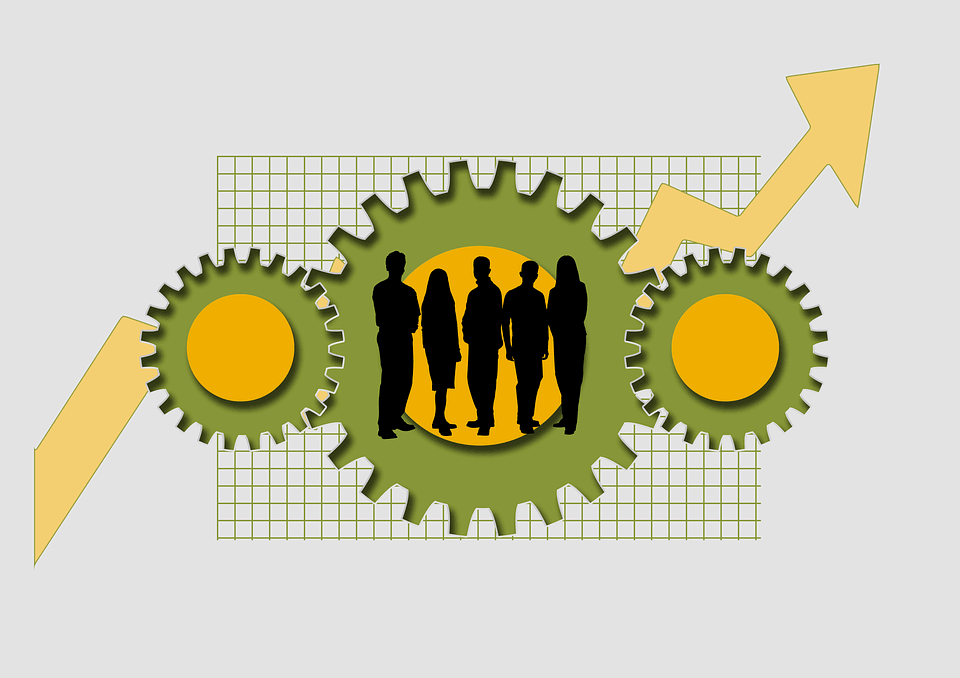Updated April 24, 2023
Intangible Assets – There is no doubt that human asset is the key intangible asset for any organization. In today’s dynamic and continuously changing business world, human assets and not fixed or tangible assets differentiate an organization from its competitors. Today’s knowledge economy distinguishes one organization from another with the most important and powerful factor: Human Resources (HR) or Human Assets.
Employees leaving an organization might be physically replacable. However, their skill sets and knowledge cannot be exactly replaced by the person replacing them, as each individual possesses a different skill set and experience. The business decision-makers know well that the skill of employees accounts for 85% of a company’s assets. Employee efficiency and talent determine the pace and growth of the organization.
“People are definitely a company’s greatest asset. It doesn’t make any difference whether the product is cars or cosmetics. A company is only as good as the people it keeps.” – Mary Kay Ash
“The most valuable assets of a 20th-century company were its production equipment,” said management guru Peter Drucker in 1999. “The most valuable asset of a 21st-century institution, whether business or non-business, will be its knowledge workers and their productivity.” Drucker’s insightful observation marks the reality as to why the industry faces the majority of issues in today’s knowledge economy. The human asset creates all intangible assets, be it patents, copyrights, intellectual property, brands, trademarks, and research & development. They are essential contributors to profits and shareholder value.
Investment advisory firm Ocean Tomo estimates that in 1975, the value in the S&P 500 firms comprised more than 80% of tangible assets – like land, plant, and machinery. In 2010, approximately 80% of the S&P500 market value was allocated to intangible assets. However, there still lies a gap in today’s accounting systems and financial reporting, as they use 20th-century definitions.
The Harvard Business Review in 2004 noted that the skills and talents of a company’s workforce constitute an intangible asset — and that such assets “are worth far more too many companies than their tangible assets.”
It’s time that organizations recognize that valuing their employees as assets should be realized in a full-fledged manner. The employees (their knowledge, expertise, abilities, skill sets, and experience) are invaluable and intangible assets in securing the future. Think of what the organization could achieve with everyone in the boat actively rowing in the same direction. The valued employees will gladly compete in this race, overtake the competitors, cross the finish line first, and stand with the organization’s name held high on the medal stand.
The following is why employees are any organization’s most valuable intangible assets.
Here are some of the intangible assets of an organization:
- The employees are essential to provide the company’s goods or services. Improving employee efficiency and performance, therefore, becomes a major priority. Every department comprises employees with different specializations and responsibilities, such as production, finance, marketing, IT, etc. The employees produce final goods, take care of finances, promote the products and services in the market, maintain the records for the organization for decision-making, etc.
- The customer is the King, and employees are the first customer of any organization. If the organization does not have happy and satisfied employees, it will not deliver performance-oriented results, thereby reducing its profits.
- The employees give their 100% to any organization, whether a small, medium-scale, large-scale, or business giant like Google, Apple, Microsoft, etc. Let’s not forget that the continuous hard and smart effort put in by the happy and valued employees keeps the organization going in the long run, competing with the competitors and keeping it ahead of all.
- Employees are the face of an organization. It’s their satisfaction level that matters the most. If an employee is unhappy, he might spread negative word about the organization, even if he is working or has left the organization. Not only this, but an unhappy employee lacks motivation and does not perform well, which ultimately leads to unsatisfactory performance by her/him. This results in unachievable performance targets, low profits, and, at worst, customers leaving and going to your competitors.
On the other hand, happy employees will make their outside-workplace social group leave their organizations and join yours. Remember, positive attracts positive. An efficient and happy employee can be a great source of bringing in new people like herself/himself.
Recommended courses
- They are the nurturers of the organization. They give in their heart, soul, and blood to the organization. Just like the parents nurture their kids to grow into good human beings. Similarly, the employees boost the organization with their valuable and endless efforts to take it to the top of the pyramid.
- Skilled people who know how a company operates are difficult to find and maybe even harder to replace. Their skills include training and development programs, experience in specific fields, and understanding various companies’ cultures, systems, and work procedures. The salaries are not the true measure of their skills and expertise, as the knowledge or creative ideas are abstract. They are intangible and cannot be measurable in terms of money.
- Employees are the base of a strong and long-running organization. If the base of a building is not strong enough, it is always dangerous to fall into an unexpected critical situation. The same goes for an organization too. The employees run the organization, whether at the middle or senior level. Their strength, commitment, dedication, and emotional connection with the organization cannot be judged or assessed in monetary value, making them invaluable and intangible assets.
- Motivated employees make a significant difference by reaching new targets, meeting customers’ demands and needs, developing innovative and new products, and performing enormous efforts to achieve the company’s long-term or short-term objectives.
- Employees are the major contributors to the profits and worth of the organization. The employees might appear under “asset” in the balance sheet or books of an organization’s accounts; however, they are the most valuable assets that cannot be given any monetary value. This is because of the irreplaceable efforts that the employees put in, which further results in excellent customer reviews and creating brand loyalty from customers.
- The HR department comprises employees responsible for hiring more employees with specific talents who can team up with the veteran in the organization that belongs to their job profile and works for the organization efficiently and effectively by combining new and fresh ideas with unmatchable experience. The employees are the workforce of the organization. They are far more important than machinery or production equipment, or land that serves as tangible assets.
“Your number one customers are your people. Look after employees first and then customers last.” – Ian Hutchinson, author of People Glue
If we look at it, the employees seem to be tangible assets. After all, they’re present in front of us in a physical form. But while it’s all right for organizations to address their employees as invaluable assets, it’s not the employees — the flesh-and-blood individuals — rather, it’s their abilities, which make the employees intangible assets, because abilities, knowledge, and experience cannot be given any monetary value whatsoever. When a talented, skilled worker leaves the company, they can’t be replaced by bringing another body off the road. The organization requires someone with an equivalent skill set. The skill set of the organization’s people, more than the people themselves, is an asset, and since these abilities or skills can’t be touched, it’s an intangible assets.
The major responsibility of an organization is to keep the employees happy and satisfied. This does not come with huge salaries or hefty paychecks alone. There are a lot many other factors besides this, which help in retaining the invaluable and intangible assets of the organizations, viz., Employees:
- Perks and incentives
- Bonuses
- Healthy work environment
- Coerciveness and Positivity in the Workplace
- Other fringe benefits
- Flexible work culture
Employees are undoubtedly invaluable and intangible assets for any organization taking it forward by keeping a dynamic and learning environment to cope with the continuously changing industry, whether technological advancements or political and economic changes. The employees who run the company with their efforts are priceless no matter what. Employees are termed intangible because their skill set, expertise, knowledge, and experience cannot be measured in money. The salaries are given to a position and not an employee’s skills. An employee is far more than the salary provided to them, so the concept of performance-based incentives was introduced so that the employees can be given somewhere close to what they deserve based on their efforts for the organization.
The valued and delighted employees, the human capital, or the workforce of an organization put their heart and soul into their work in the form of the best skills, know-how, creativity, ideas, adaptability, word-of-mouth, and so on. This contribution makes them highly invaluable and intangible as these efforts and dedication have no measure in monetary terms. The employees work for the organization and themselves. The organization’s practices to keep the best and ensure all employees are happy are directly proportional to the employees’ endless commitment and dedication. It’s a joint effort by the organizations and employees.
People power is the most important of all the organization’s assets, as this contributes majorly to the profits, market value, sales figures, and consequently, the books of accounts. The goodwill section in the balance sheet can be valuable for the former employees, as their efforts and contribution have brought the organization to this position today. However, the current workforce will be an invaluable and intangible asset.
“People want to know they matter and they want to be treated as people. That’s the new talent contract.” – Pamela Stroko in Tanveer Naseer’s blog post “How Leaders are Creating Engagement in Today’s Workplaces”
All in all, the employees, working at any level, are the eyes and ears of any organization. The real fuel and energy behind a company’s growth and success come from its people or the workforce. It’s important to keep the employees delighted and contended to ensure that the organization does not lose its customers, profits, and, most importantly, market value.
Employees should be a company’s greatest asset. While most companies agree with this in principle, they often do not support it in their day-to-day actions. People can make all the difference in a company’s success and, with a motivated workforce, can make up for almost any lack of other resources such as facilities, working capital, and limited products. Every company should make concentrated efforts to meet employee needs and desires cost-effectively to improve company performance. This enhanced performance should result in better customer service and increased shareholder value.
Most employees are hired to do functions specifically based on the organization’s current needs. As the strategies and directions of an organization change, these employees (human assets) start yielding less over time. In some situations, such employees hired never have their complete capabilities assessed or explored. Furthermore, a general inability to quantify the capacity of human resources exists. Subsequently, the organization cannot effectively determine when it has reached its reasonable human asset capacity level. This concludes the reasons why employees are invaluable and intangible assets for any organization.
Recommended Articles
Here are some articles that will help you get more details about intangible assets, so just go through the link.






